Surface Irrigation: [Concept, Advantages, Disadvantages and Requirements]
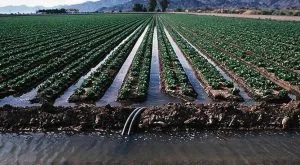
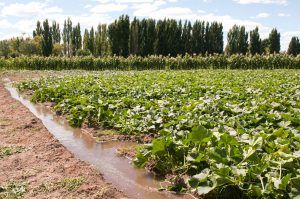 Surface irrigation is a method that facilitates the distribution of water to be applied throughout an area thanks to the support of the force of gravity.
Surface irrigation is a method that facilitates the distribution of water to be applied throughout an area thanks to the support of the force of gravity.
It is a very useful method in certain agricultural plantations and that is why it is still within the options for certain types of crops.
However, it is not recommended that it be applied by inexperienced people because it could cause the loss of soil nutrients. There is much to say on this topic and we are ready to start this journey by your side. Will you join us?
What is surface irrigation?
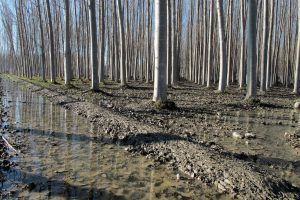
Surface irrigation is a strategy used in agriculture that allows a large amount of water to be released onto a piece of land.
This water reaches the different points of the area thanks to the force of gravity that is responsible for distributing it.
In addition to that, it reduces the amount of liquid thanks to the filtration of the ground, which prevents puddles from occurring.
Surface irrigation is not of a single type, but we can find at least two ways to apply it:
- By flood: it is the irrigation system that seeks to fill a certain plot of water and that it remains «flooded» for a specific time. It is a type of irrigation that is only applied to certain species, such as rice, but in most cases it is detrimental to crops due to the risk of root rot.
- By furrows: it is a system that is based on the creation of furrows throughout the land through which the water circulates. This form is beneficial for the irrigation of different fruit trees, vegetables, among others.
What are the advantages of surface irrigation?
Surface irrigation has a number of beneficial aspects that are worth learning about. These are:
- It is a very economical method that hardly requires investment for its installation and where maintenance is quite low.
- It is not necessary to have any source that moves the water by pressure because it acts directly by gravity. In this way, it avoids the energy waste that is common in other types of irrigation systems.
- It is easy to serve as a water source for almost all types of crops, taking care only of the amounts of water provided and the frequency of irrigation application.
- The water runs slowly, so it is beneficial for the low flow, allowing the water to penetrate to the lowest layers of the earth.
- It helps the irrigation to be applied in a uniform way, fulfilling this requirement in a short time.
What disadvantages does this system have?
In the case of negative aspects, surface irrigation stands out with the following disadvantages:
- Loss of nutritional value of the soil after irrigation has been applied for certain periods of time.
- It is not possible to control exactly how much water each crop on the field receives. This has led many places to promote its replacement by irrigation systems that make more efficient use of water.
- It is only recommended for land that does not have a slope or that the amount that they have is minimal to avoid leveling work.
- If a correct installation has not been done, it can cause a negative impact on production.
- It is not a modern method, so there is no way to automate it so that it works almost alone, as is possible in other options.
- Although it is relatively low, surface irrigation has a negative impact at an environmental level as it generates problems such as soil erosion and salinization of the land if quality water is not used.
What do we need to install a surface irrigation system?
To install a surface irrigation system, it will be necessary to have the following infrastructure:
- Water collection system: it is the point from where the water that will be taken to the storage tank is obtained. If it is a mechanism that collects water from a natural source, for example, it will be necessary to design a way in which it can be taken to where the tank is.
- Reservoir or storage tank: this is the place selected to store all the water that will be used in irrigation. The normal thing is that it is installed with a certain elevation to allow the water to flow by the force of gravity more easily.
- Pipe networks: they are in charge of transporting the water to the specific places where it will be released to the earth. If the plot where the surface irrigation system is going to be installed is very large, this point must be planned very carefully to ensure that it reaches all points.
- Road networks: they are the grooves or guides that are designed on the ground to give the water the path to follow. Depending on the extension of the plot, this must be a job that must also be carefully designed to occupy the entire surface and ensure that the water reaches all points.
- Drainage networks: they are the installations that are placed to collect all the water that may be left over towards the end of the furrows or paths where it circulates for irrigation.
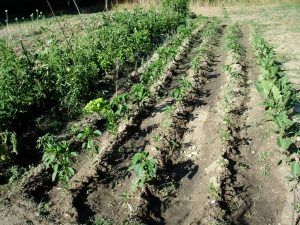
Surface irrigation continues to be one of the most widely used at the agricultural level, both in Spain and in the rest of the world.
The reason is that it is a method that has been used over time and that generates many positive results on a large scale.
However, the environmental struggle is creating strong movements to replace them with systems that are more efficient in the use of water.
Among the alternatives for which it is possible to bet is drip irrigation, which also applies localized irrigation, directly to the crop, but with a more efficient use of this resource.
Bibliographic references
- Surface irrigation, JM Faci González, E Playán Jubillar – 1994 – digital.csic.es
- Surface irrigation methods, JA Forero Saavedra – sidalc.net
- Semi-automatic system for surface irrigation , J MonseRRAt, J Rosell, J Barragán, L Cots… – Irrigation and Drainage…, 1998 – core.ac.uk
- Performance of surface irrigation in the irrigated area of the upper Tunuyán river basin, Mendoza, Argentina, C Schilardi – 2010 – ediunc.bdigital.uncu.edu.ar
- Evaluation of discontinuous flow technical surface irrigation systems, J Morábito, C Romay – … from: http://www. pyrargentine. com. ar …, 2001 – pyrargentina.com.ar
- Irrigation systems, S MARIA – 1997 – iessantamaria-cat.infd.edu.ar

![Photo of El Singonio: [Characteristics, Sowing, Care, Substrate and Irrigation]](https://www.complete-gardening.com/wp-content/uploads/2021/06/características-del-singonio-o-planta-punta-de-felcha-390x220.jpg)
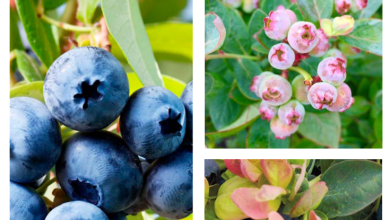

![Photo of Beaucarnea: [Cultivation, Irrigation, Care, Pests and Diseases]](https://www.complete-gardening.com/wp-content/uploads/2021/06/Beaucarnea-390x220.jpg)